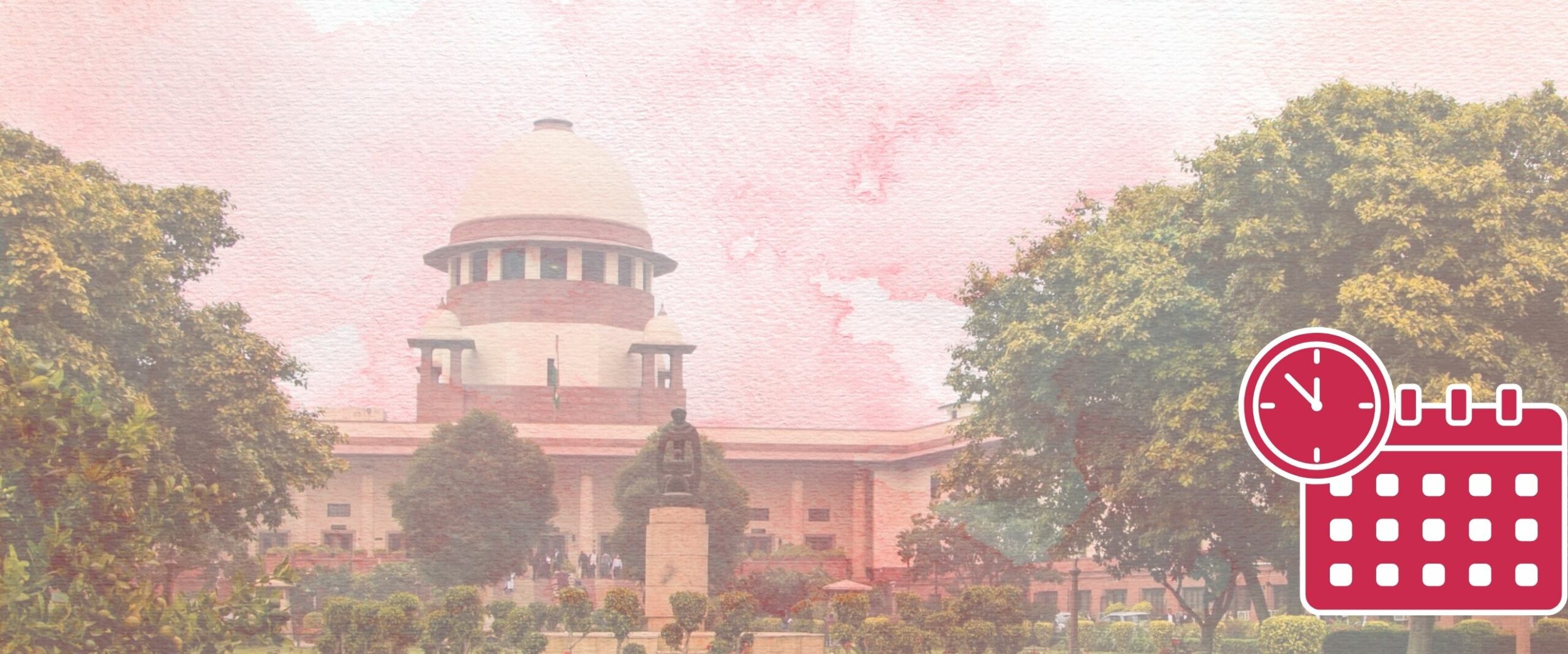Court Data
The SC Needs an Uninterrupted 3.8 Years to Clear All Pending Cases
Congestion at the SC sees a fourfold increase over the course of a decade reaching numbers not seen in over 30 years.

The Supreme Court’s pendency crisis hit a new high at the end of 2021: over 70,000 cases are pending before the Court.
To understand the kind of burden this imposes, SCO calculated how many years it would take for the Court to clear all these cases if no new cases were filed. We also trace how this figure, known as congestion rate, has grown in the last 10 years.
Pendency figures indicate the number of cases instituted before the Supreme Court, but not disposed of yet. The congestion rate estimates how long an instituted case spends in the Court before it is disposed of.
Ideally, congestion must be kept low if we are to see fewer cases pending at the SC. Rising congestion means that the number of cases clogging the system are increasing while more cases are instituted before the Court. The result: the Court is burdened by older cases, with litigants waiting longer before their matters are heard.
Calculating Congestion at the SC
The congestion rate for a given year is calculated by dividing the total number of pending cases by the total number of cases disposed of in that year.
For example, suppose that at the end of a given year there are 70,000 pending cases while 20,000 cases have been disposed of in that year. Dividing the total pending cases by the total cases disposed of provides the time required to clear all pending cases for a given point in time. In the present example, the congestion rate would be 3.5. This indicates that the Court requires 3.5 years to clear the case backlog at its present speed, provided that no new cases are instituted before the Court.
Since the congestion rate estimates the time required by the Court to dispose of cases instituted before it, a lower rate of congestion indicates faster case disposal while a higher rate of congestion indicates slower case disposal.
The congestion rate is merely an estimate. It does not account for subjective factors that might affect the duration of a case.
Tracing Congestion in the Last Decade
Figure 1 plots the congestion of cases at the Supreme Court over the last decade. The x-axis plots the years between 2012 and 2021. The y-axis marks the number of years required to clear pending cases.
What it indicates: the congestion rate at the SC has quadrupled over the course of a decade. It has now reached numbers last seen over 30 years ago.
Between 2012 and 2017, congestion changes steadily, without stark changes. In 2012, the Supreme Court would require one year to clear all pending cases. The congestion rate dropped to 0.68 in 2014, before rising again over the next three years. The congestion rate crosses 1 in 2017 and hits 1.5 in 2018.
The average congestion rate for the last 10 years is 1.49.
SCO has previously documented the negative effects of COVID-19 in 2020 and 2021 on institution, disposal, and pendency. After an increase in congestion in 2020, by 2021, congestion hit an alarming 3.83.
While the sudden rise in the congestion rate over the pandemic years is concerning, the Court has been quick to adopt hybrid and virtual hearings for safety and convenience. Government data suggests that between the first lockdown in March 2020 and March 14th 2022, the Supreme Court held 2.18 lakh virtual hearings. This makes it ‘the world leader in virtual hearings’.
In July of last year, CJI Ramana further emphasised the need for mediation to tackle the growing pendency problem. Whether these measures will ultimately ease the burden on the Court remains to be seen.